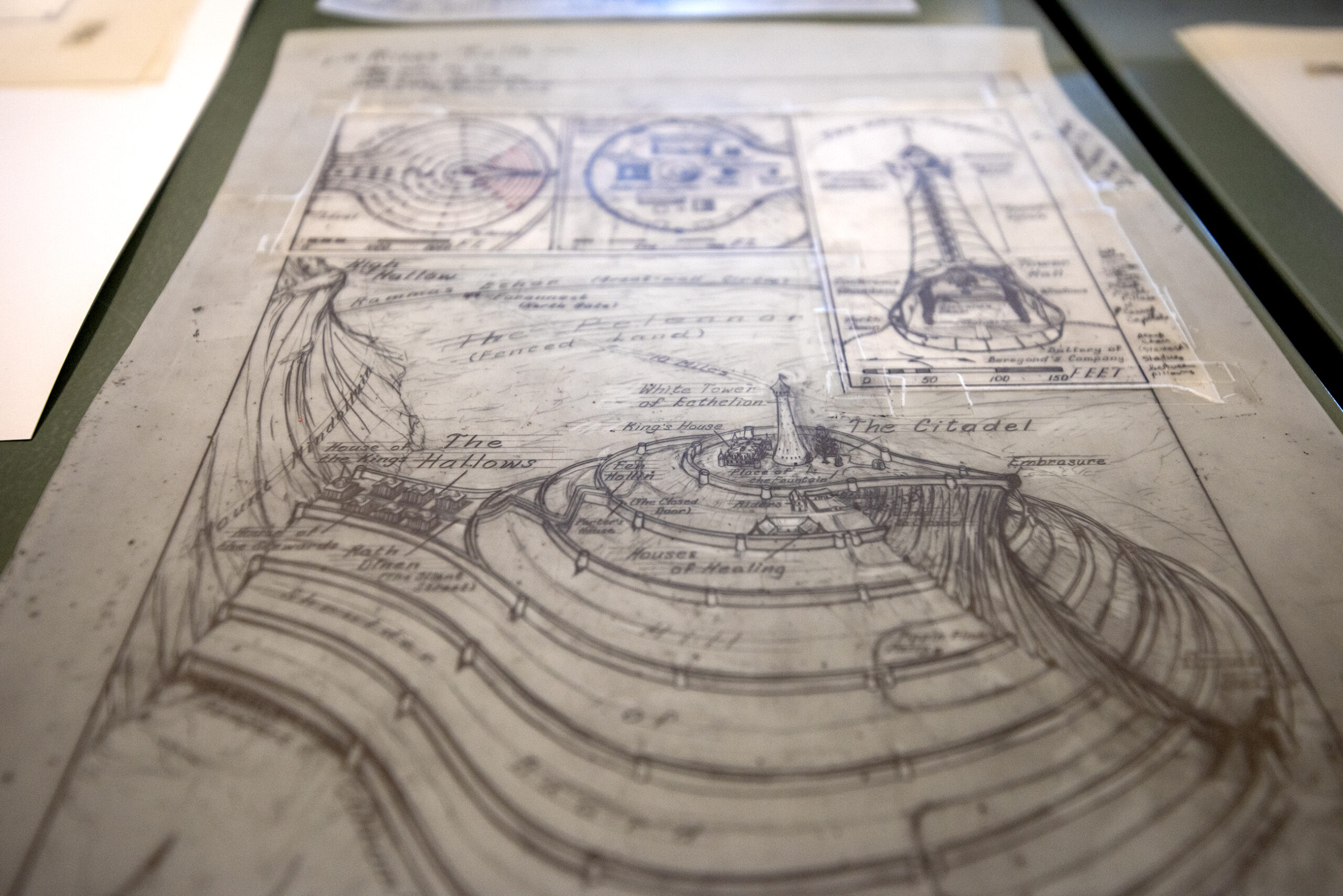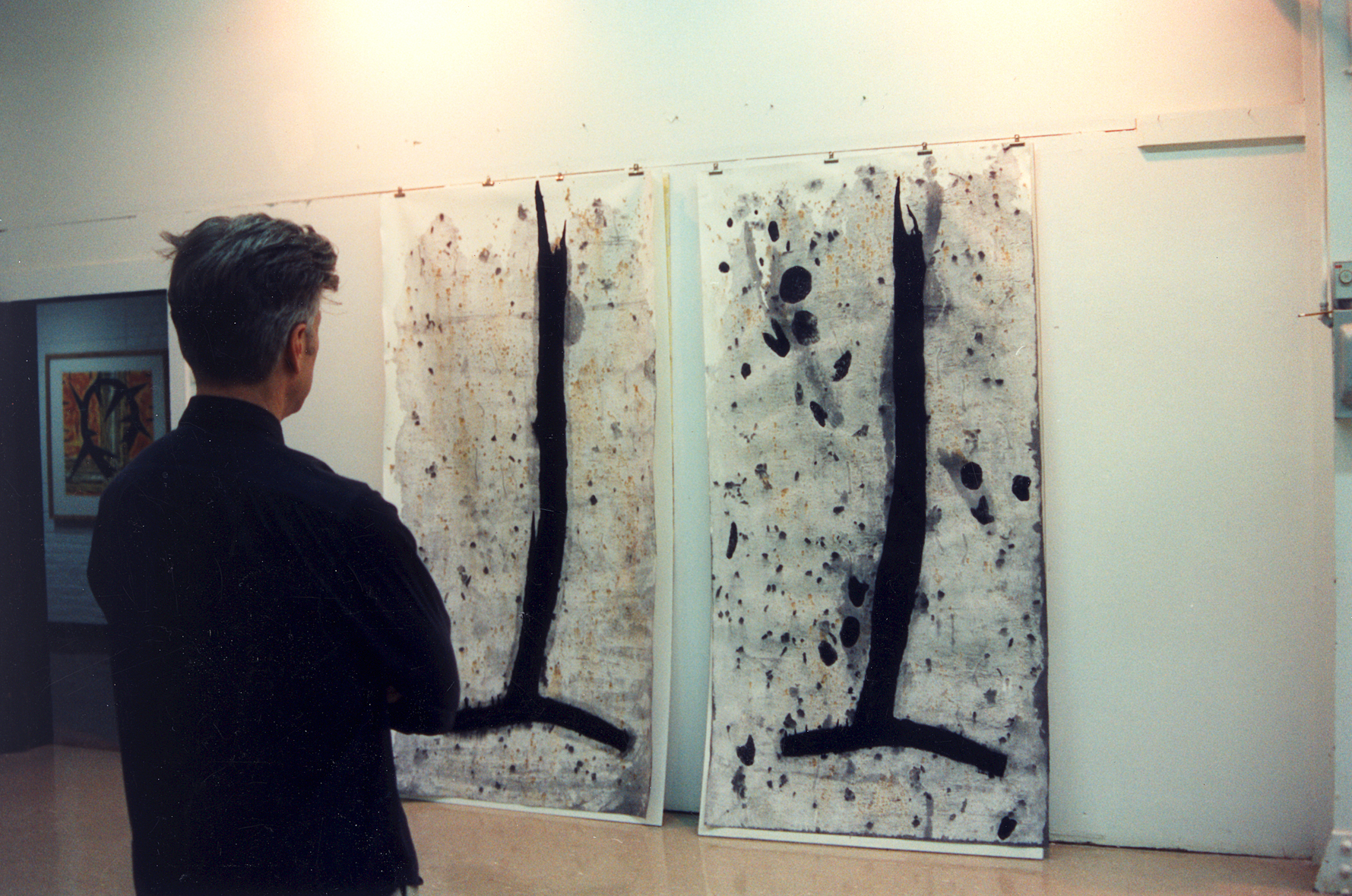He dove all over the world. He repeatedly risked his life to explore the depths. He invented technology that revolutionized diving and underwater filmmaking. He smashed the world deep diving record and broadcast it on the radio.
No, it’s not Jacques Cousteau. It’s Milwaukee’s own Max Gene Nohl.
The deep-sea diving pioneer was born, lived and worked right here in Wisconsin, hundreds of miles from any sea or ocean.
Stay connected to Wisconsin news — your way
Get trustworthy reporting and unique local stories from WPR delivered directly to your inbox.
Nohl wrote a memoir recounting his many escapades in diving, complete with pen-and-ink sketches. But it went unpublished during his life — Nohl died in a car crash in 1960. For more than 60 years, the documents sat in the Milwaukee Public Library archives.

A few chapters of the manuscript made their way into the hands of Wisconsin Historical Society maritime archaeologist Tamara Thomsen. Early in her diving career, she believed she’d have to travel far and wide to make a difference in the world of diving. Nohl’s example showed her that wasn’t true.
“I leapt into his shoes, thinking, ‘I’m a diver here in Wisconsin. What do I have to contribute?’” Thomsen told WPR’s “Wisconsin Today.” “Here this person was, living about 50 years before me, and making all of these important contributions to the sport.”
When Thomsen began working at the Wisconsin Historical Society in 2004, she knew she had to share Nohl’s story with the world.
This week, the Wisconsin Historical Society Press released “I Live Underwater: The Thrilling Adventures of a Record-Breaking Diver, Treasure Hunter, and Deep-Sea Explorer.” Thomsen wrote the foreword to the book.

Fear and fascination with the underwater world
Nohl had an unusual introduction to his deep-sea diving career: he nearly drowned.
While wading in the water at Moose Lake in Waukesha County, Nohl went in too far and slipped down the slope at the bottom of the lake, breathing water into his lungs and going unconscious.
Nohl was saved. But later that same summer, one of his closest friends was not so lucky. He went missing while swimming, and Nohl was there when his body was recovered.
“All of this, superimposed upon the vivid memory of my own experience in exactly the same place just a few weeks earlier, caused deep water to take on a new significance. I was afraid,” Nohl wrote in his memoir.
The fear came with fascination. He learned to swim, and when, as a teenager, his friend built a diving helmet out of a paint can using instructions from a magazine, Nohl agreed to be the first to try it.

Inventions ahead of their time
Miraculously, the helmet worked, and Nohl was enamored with the experience. In 1929, he went to the Massachusetts Institute of Technology to study the science and engineering he needed to further the field of deep-sea diving. At that point, Nohl said, diving technology had not significantly advanced in almost a century.
“The problems, it seemed to me, were not problems to be solved by greater brawn, enlarged lung capacity, or more resistant bodies—they were problems of hydraulics, physics, chemistry, and mathematics. In short, problems of engineering,” Nohl wrote.

Nohl went on to work on the first ever self-contained diving suit, made innovations to underwater cameras and the film industry, designed diving bells, helmets, suits and rebreathers — which re-circulate unused oxygen back through a diving system. He co-founded the Diving Equipment & Supply Company, or DESCO, the longest-running producer of underwater equipment, which is still headquartered in New Berlin.
And he co-invented a “free-swimming lung” that allowed divers to swim without a hose connecting them to the surface — five years prior to Jacques Cousteau’s famous Aqua-Lung. It was the predecessor to the scuba gear used today.

‘Hitting the bottom, reaching the top’
Perhaps Nohl’s best-known achievement is his world-record deep dive in Lake Michigan — and how he did it.
In 1937, Nohl was researching helium as a deep-diving gas, years after the Navy discontinued research on it. With his friend and colleague Dr. Edgar End of Marquette University, they ran experiments in a hyperbaric chamber at the Milwaukee General Hospital and worked out a new helium-oxygen gas mixture that would help a diver avoid decompression sickness, or “the bends.”
Nohl wanted to test a rebreather suit he invented, and the new gas mixture, at an extreme depth. He was aiming for 360 feet — 54 feet deeper than the world record at the time. But when his crew took a boat out on Lake Michigan on Dec. 1, 1937, they found the charts were wrong. They were in 420 feet of water.
Nohl made it to 360 feet. But it wasn’t enough. He needed to get to the bottom.

“Fear transformed into fascination was urging me downward. It was the same compulsion that I had always felt as my body slid down into dark deep water,” Nohl wrote. “But now, at this heretofore unpenetrated depth, it was roaring in my brain.”
Nohl continued to his final depth of 420 feet. He had shattered the world record. And, equipped with a microphone in his helmet, his voice was being broadcast live on the radio via NBC.
But Nohl’s record-breaking descent was only half of the feat. Getting him back to the surface safely wasn’t a sure thing.
“Dr. Edgar End, the physiologist, is on the boat with a slide rule, trying to extrapolate out these tables and figure out how to get this guy to the surface alive with decompression,” Thomsen said. “And when he got him up, he had set the world deep-diving record, and that stood for several decades.”
The Lake Michigan dive represented major advancements in diving techniques and technology, and Nohl’s influence persists in modern diving practices.
A legacy of adventure
After many more adventures, Nohl eventually settled into his role at DESCO. But it didn’t last long.
“I was settling down to a quiet, sensible businessman’s life,” Nohl wrote. “Then a television announcement changed all my plans.”
A ship known as Prins Willem V had sunk in 1954 in Lake Michigan just over 5 miles from where Nohl lived. And he wanted a crack at salvaging the ship and its cargo. Nohl won the bid to raise the ship.

There were many failed attempts by Nohl to raise the ship in one piece using balloons and pontoons. Before he could try again, Nohl and his wife, Eleanor, were killed in a head-on car crash. The occupants of the other car also died — including rhythm and blues singer Jesse Belvin, who co-wrote “Earth Angel.”
Nohl was never able to raise Prins Willem V. But because of its accessibility, it’s one of the most popular shipwrecks to dive in the United States.
And it’s one of many in Wisconsin.
“We have a lot of shipwrecks that are off Lake Michigan and Lake Superior. There’s a lot of inland lakes, too, with a lot of things to discover,” Thomsen said.
The stories outlined here just scratch the surface of the tales contained in Nohl’s memoir. Thomsen hopes that his story serves as a reminder that Wisconsin can be a place of great adventure.
“There are so many cool things right in our backyard,” Thomsen said. “Just open yourself up to that adventure. Being in Wisconsin shouldn’t be limiting for someone that wants to explore.”







